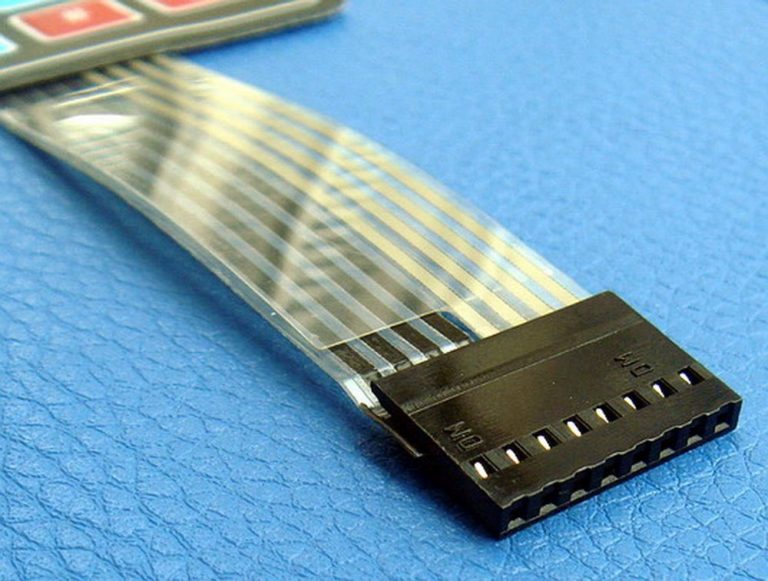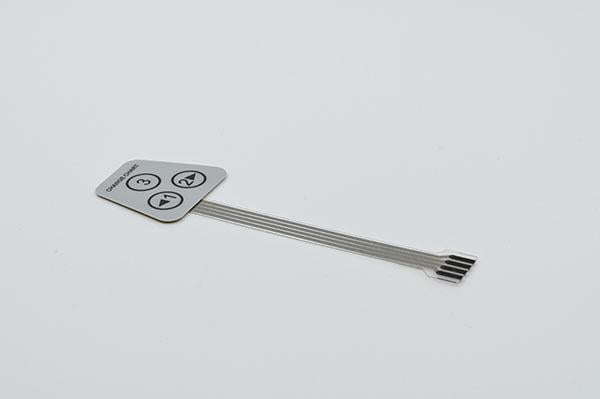An forward-thinking membrane switch manufacturer can offer modern features and materials.
An forward-thinking membrane switch manufacturer can offer modern features and materials.
Blog Article
All Regarding Membrane Layer Switch Over: Recognizing Its Style and Functionality
When you assume regarding the control interfaces in contemporary devices, membrane buttons usually come to mind. Allow's discover what sets membrane changes apart from various other control systems.
What Are Membrane Buttons?

Membrane layer switches can also be tailored relating to form, size, and graphics, permitting suppliers to produce one-of-a-kind user interfaces customized to particular items. Generally, membrane layer buttons play a considerable role in boosting individual experience throughout a large array of applications.
Just How Membrane Changes Job
When you press a key on a membrane layer switch, it activates an uncomplicated yet efficient mechanism. The top layer, typically made of adaptable material, lowers onto a conductive layer underneath it. This action bridges the void between conductive traces, finishing an electrical circuit. As quickly as the circuit closes, it sends out a signal to the device's controller, which translates your input.
You'll see that the tactile feedback differs based upon the button style, offering either a soft click or a more obvious action. Once you launch the trick, the membrane go back to its original placement, reopening the circuit and stopping the signal. This procedure takes place practically immediately, guaranteeing a receptive customer experience.
Membrane layer switches are popular because of their resilience and resistance to dust and dampness, making them ideal for different applications, from house appliances to medical devices. Recognizing this operation assists you appreciate their widespread use.
Secret Components of Membrane Layer Buttons
Recognizing the essential parts of membrane switches is essential for realizing their performance and layout. At the core, you'll find the visuals overlay, which supplies the aesthetic user interface for users. Underneath that, there's a spacer layer that divides the circuit layers, making certain that they do not make call up until pressed. The circuit layer is where the magic happens; it is composed of conductive traces that complete the circuit when you push the switch. One more crucial aspect is the glue backing, permitting the button to follow surface areas safely. The protective layer guards versus ecological elements and use, prolonging the button's life-span. Each part plays a significant role in guaranteeing reputable performance and user communication. By understanding these parts, you'll obtain understanding right into exactly how membrane switches over run and their value in various applications.
Products Utilized in Membrane Layer Switch Over Layout
The efficiency and toughness of membrane switches greatly rely on the products made use of in their style. You normally come across polyester and polycarbonate as key substratums due to their excellent toughness and adaptability. These products resist scrapes and chemicals, making them excellent for requiring atmospheres.
The conductive layers typically use silver or carbon, selected for their dependability and conductivity. membrane switch manufacturer. Silver gives premium performance, while carbon is a cost-efficient option. For the overlay, you might take into consideration a matte or shiny coating, depending on your aesthetic demands and user experience
Make specific to select adhesives that stand up to environmental factors like temperature level and humidity. Choosing the right products will assure your membrane button stands the examination of time.
Style Factors To Consider for Membrane Buttons
While designing membrane layer buttons, it's essential to take into account different variables that influence their capability and customer experience. Begin by focusing on the layout and button size; make particular they're intuitive and easy to browse.
Don't ignore the visuals layout; clear labeling and color contrast are considerable for visibility. Validate your design suits ecological variables, like dampness or temperature level variations, which can impact efficiency. Finally, keep in mind the relevance of testing models with genuine individuals to collect feedback and make needed changes. This repetitive process helps you refine the design, confirming it satisfies both practical and aesthetic requirements successfully. By very carefully thinking about these components, you'll produce a membrane layer button that boosts usability and complete satisfaction.
Applications of Membrane Layer Switches
Membrane switches are flexible components found in different applications, from industrial devices to consumer electronic devices. You'll see their effect in devices that require resilient interfaces and in gadgets that benefit from smooth layouts. Comprehending these applications helps you value the capability and functionality of membrane buttons in daily technology.
Industrial Tools Use
When you're aiming to boost the performance of industrial tools, membrane buttons provide a trusted solution that combines durability with user-friendly style. These switches about his are best for severe atmospheres, supplying resistance to dirt, dampness, and chemicals. You'll find them in control panels for producing equipments, cooling and heating systems, and medical tools, where precision and responsiveness are crucial. Their reduced profile implies they fit seamlessly into various equipment, conserving important space while preserving convenience of use. With customizable graphics and backlighting options, you can develop an instinctive user interface for drivers, enhancing efficiency and safety. Plus, their lengthy life-span minimizes maintenance expenses, making them a wise investment for your industrial applications. Accept membrane layer buttons to simplify your operations and enhance general efficiency.
Consumer Electronic Devices Integration
In the domain name of consumer electronic devices, membrane layer switches play a crucial function in improving user communication and device functionality. Membrane layer buttons likewise assure resilience and resistance to dust and dampness, prolonging the life expectancy of your electronic devices. By choosing membrane layer switches, you enhance not just the performance yet also the style of your devices, making daily interactions smooth and satisfying.
Advantages and Negative Aspects of Membrane Layer Buttons
While membrane layer switches use a range of advantages, they likewise come with some downsides that you must consider. One substantial advantage is their portable layout, making them suitable for space-constrained applications. They're additionally cost-efficient, providing a long lasting option with a low production cost. On top of that, their seamless surface area is easy to clean, improving health in environments like health centers.

Nonetheless, there are downsides. Membrane switches can have a shorter lifespan compared to mechanical buttons, specifically under hefty use. They can likewise be much less responsive, which could impact get redirected here user comments during operation. If damaged, repairing them can be tough and often needs full substitute. Inevitably, their level of sensitivity to severe temperatures and ecological problems may restrict their performance in certain setups. Stabilizing these benefits and drawbacks will certainly assist you identify if membrane layer buttons are the appropriate fit for your task.
Often Asked Questions
Exactly How Long Do Membrane Changes Typically Last?
Membrane switches commonly last in between 5 to 10 years, depending on use and ecological problems. You'll want to evaluate that site aspects like wear, direct exposure to dampness, and temperature fluctuations to determine their longevity efficiently.
Can Membrane Layer Switches Over Be Custom-made for Particular Styles?
Yes, you can customize membrane switches to fit specific styles (membrane switch manufacturer). You'll have the liberty to choose shades, forms, and designs that match your task's demands, ensuring they mix perfectly with your general visual
What Is the Expense Range for Membrane Layer Change Manufacturing?
The price range for membrane button production usually falls between $1 and $10 per unit, depending on elements like style intricacy, amount, and materials. You can get quotes from producers to discover the finest option.

Are Membrane Switches Waterproof or Resistant?
Membrane layer switches can be created to be water resistant or immune, depending upon products used and building methods. If you need them for damp settings, guarantee you specify those needs during the style process.
Just How Do Membrane Switches Compare to Standard Buttons?
Membrane layer switches are normally thinner and more versatile than standard buttons, offering a smooth design. They're typically simpler to cleanse and integrate, however could not provide the tactile responses you're used to with mechanical options.
Verdict

Report this page